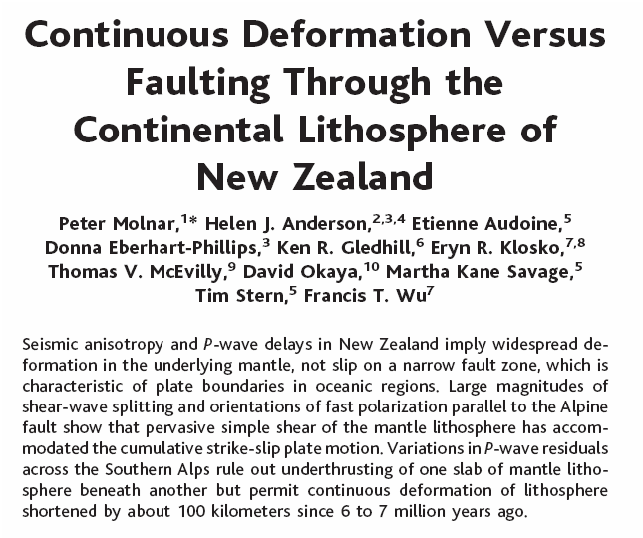-
-
-
2006-07
1. What are
large magnitudes of shear-wave splitting and orientations of fast
polarization parallel to the Alpine fault shown?
The large magnitudes of splitting (dvs /vs ¡Ý 4%) with the
orientations of fast S-wave polarizations nearly parallel to the
plane of simple shear imply shear strain corresponding to d/W > 1.5
and perhaps much larger. The nearly parallel orientations of fast
polarization at sites 100 to 150 km southeast of the Alpine fault
and at comparable distances northwest of its projection into both
the northern South Island and the North Island (Fig. 3) indicate
that strain has occurred over a zone at least as wide as 300 Km.
2. What
happen for oceanic lithosphere when we have much greater creep
strength of olivine than of crustal minerals?
The much greater
creep strength of olivine than of crustal minerals makes oceanic
lithosphere strong in the depth range where continental lithosphere
appears to be weakest (1).
3. What are the
two processes that can align anisotropic minerals?
Two processes can align anisotropic minerals: rotation of crystals
in a finite strain field and dynamic recrystallization.
........................................................................................................................
1. why
the strain due to horizontal shortening of the lithosphere, was
ignored by the authors although the strain was one of absorbtion
factor in the lithosphere?
Because that strain is smaller than the strike-slip shear and in
part because pure flattening deformation induces smaller anisotropy
than simple shear.
2. What
would Lithospheric thickening by pure shear produce?Lithospheric
thickening by pure shear would produce a high-speed zone in the
upper mantle beneath the thickest crust.
3. By how
many seconds the recrding of P-wave was delaying by lines of
seismographs across the Southern Alps (11) ?
P-wave delays recorded by lines of seismographs across the Southern
Alps (11) differ by up to 1 s from those expected for propagation
through the laterally varying crustal structure
